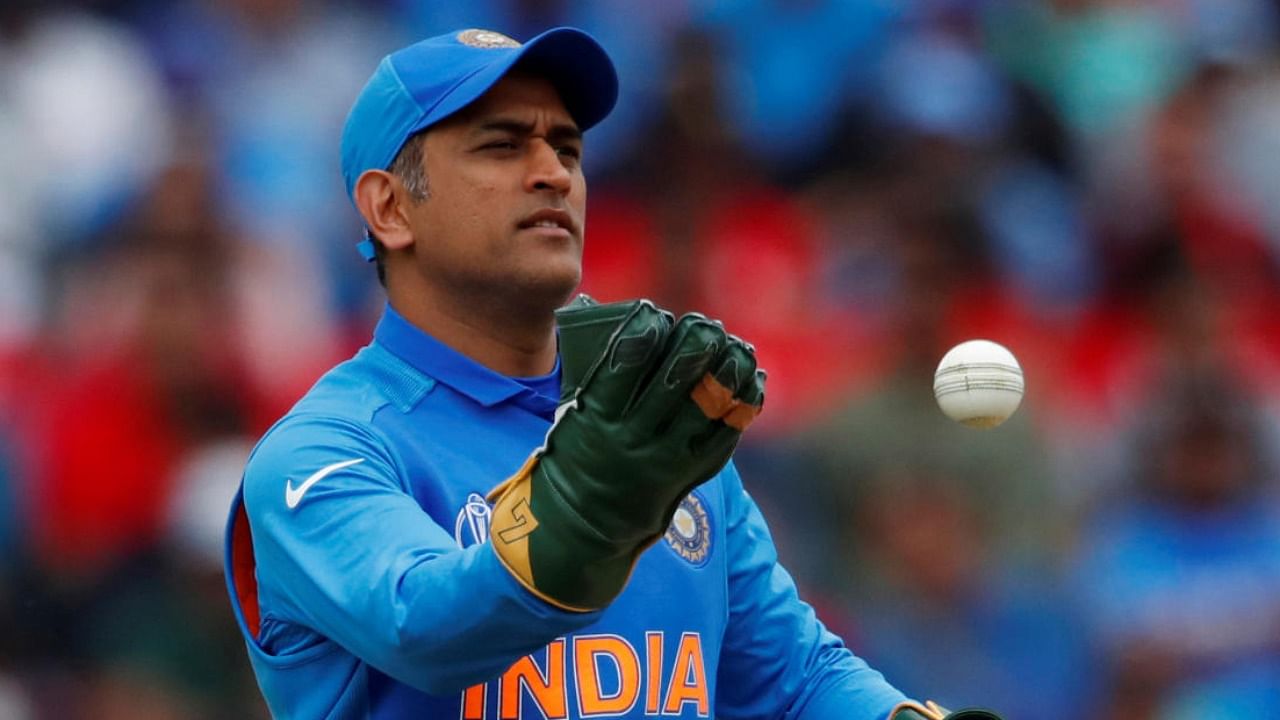
Sixteen words: that’s all it took Mahendra Singh Dhoni to call time on a glittering sixteen-year-long international career. The statement on Instagram didn’t care for the rules of spelling, grammar, punctuation or poignant endings; it was precise and unsentimentally direct. ‘from 1929 hrs consider me as Retired’. That’s it. That’s all the peak Dhonis rolled into one. The final act mirrored many of his last over finishes. You could almost picture Dhoni gently uprooting a souvenir stump after a last ball win—no leaps of joy, bumping of chests or triumphal howls—walking off the ground like a banker from his desk after shutting down the computer at close of business.
At 39, with his powers on the wane, and the ability to biff the ball almost at will not the same as before, Dhoni’s decision shouldn’t have been a surprise. But the intimations of his cricket mortality weren’t loud. Until his last game, Dhoni was among the fittest in the team, the best available white-ball wicket keeper by some distance, and a middle order batting fulcrum whose presence held out hope even when the cause seemed utterly lost. The T20 World Cup in Australia scheduled for this autumn could have been his one last shot at another title. But thanks to the Covid-19-forced delay he’d have had to hang around for another year. He chose not to. He could have hung on for a formal orderly farewell. It’s impossible the BCCI would have turned down the suggestion of a valedictory biosecure T20 International or One-Day International (ODI) to break all television rating records.
Dhoni has been subjected to as much pop-sociological analysis as technical and statistical. Yet he remains the most enigmatic figure in Indian cricket.
He wasn’t the most gifted or aesthetically satisfying of Indian batsmen. He strode out to the crease like a wrestler into the mud pit holding the bat like an exercise club. Had CLR James watched Dhoni bat, he might have been a bit hesitant in declaring cricket a full member of the community of art. Yet Dhoni retires with the reputation, and statistics to match, as one of the greatest ODI and T20 batsmen of all time. Dhoni had lightning-quick reflexes when it came to stumpings or running batsmen out, but he was hardly a velvet-gloved keeper. Yet, India has struggled to find his replacement in Tests since 2014 and filling the gap in white-ball cricket will be a lot tougher.
Of Kumaoni stock, hair streaked golden with a hint of perm, Dhoni came from Ranchi. To borrow Bill Bryson's famous line, somebody in international cricket had to. Yet, he became the most influential vector in Indian and international cricket in the post-Tendulkar and pre-Kohli era. Without Dhoni, the rise and rise of franchised T20 cricket in India and around the world may not have occurred as quickly.
His all forearms-and-fast-hands brand of power hitting, what the Australians call the shit-or-bust approach to batting, made him a veritable curiosity in the early days. Yet he soon turned into a middle order pragmatist who prevented more collapses than the Reserve Bank. Not since Stephen Hawking has anyone stretched time quite like Dhoni. He stretched game-time; Dhoni’s simple nostrum was if he batted through to the final ball, his team had a greater chance of winning.
He wasn’t a standout captain in the analytical mold of Mike Brearley, a rouser of troops like Imran Khan or a father figure like Clive Lloyd. In Test matches, Dhoni as captain often followed the ball. In ODIs and T20s he took the Arjuna Ranatunga-like attritional approach, using spin as a boa constrictor. He often let his players make their own decisions, like adults, in the age of players being spoon-fed strategic minutiae. Yet, he is the only Indian captain to lay his hands on every piece of ICC silverware. New India, we were told was thrusting, in-your-face, irreverent and hungry for success at any cost. Dhoni possessed an almost Vedantic equipoise that sometimes made him appear detached from the here and now. Even the great Rahul Dravid wasn’t above the occasional display of emotion. Dhoni, it seemed, could sit victory or defeat down for a cup of tea, irrespective of who showed up on the day. Yet, he became the posterface of New India and 24-carat advertising gold.
Dhoni’s allegiance to the IPL team Chennai Super Kings, through times clement and grey, even made the Tamils, usually touchy about influences from the north of Basin Bridge, accept him as their undisputed ‘thala’ or headman.
Those in the tedious thrall of cricket statistics, will point to players and captains with a far better record than Dhoni. The aesthetes will point to willows from which have flowed more artful runs in bigger volumes. Dhoni in excelsis did not have great mastery over cricket’s core skills but exercised such control over his emotions as few could, and with irrepressible confidence squeezed out every ounce of his talents.
To paraphrase his laconic retirement statement, consider MSD as GOAT.
(TR Vivek is a Bengaluru-based journalist)
Disclaimer: The views expressed above are the author’s own. They do not necessarily reflect the views of DH.